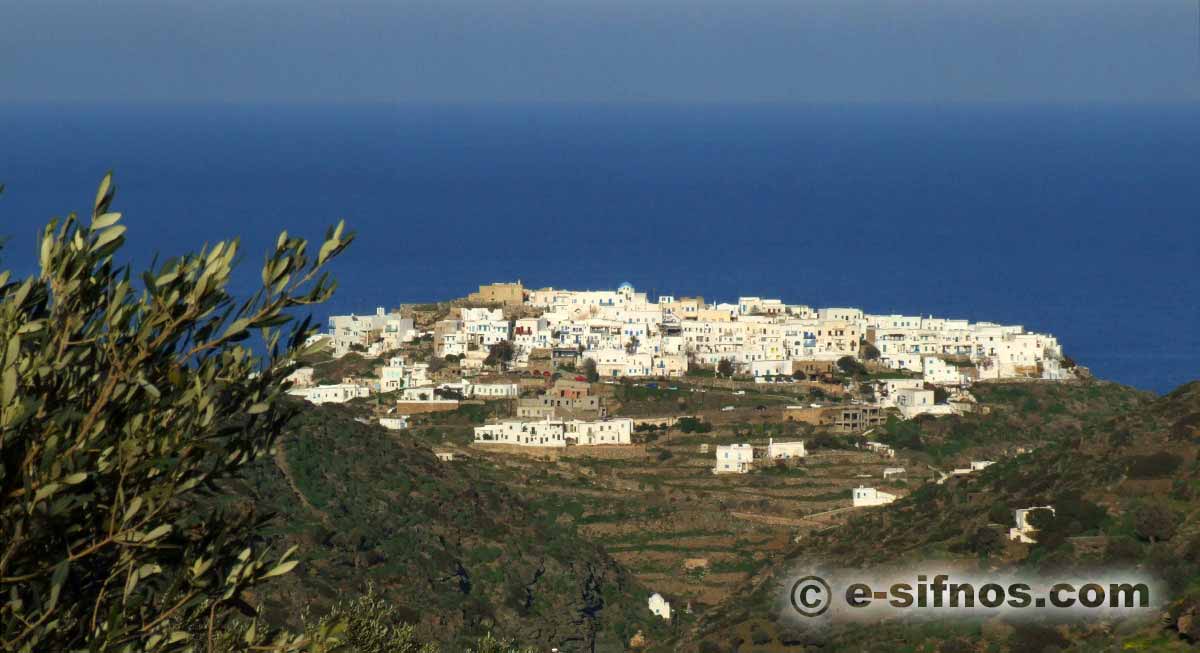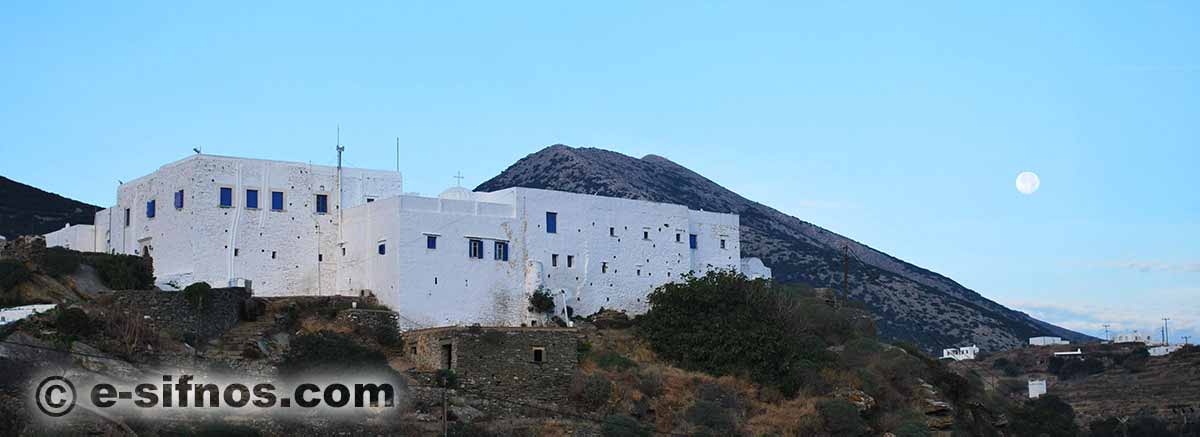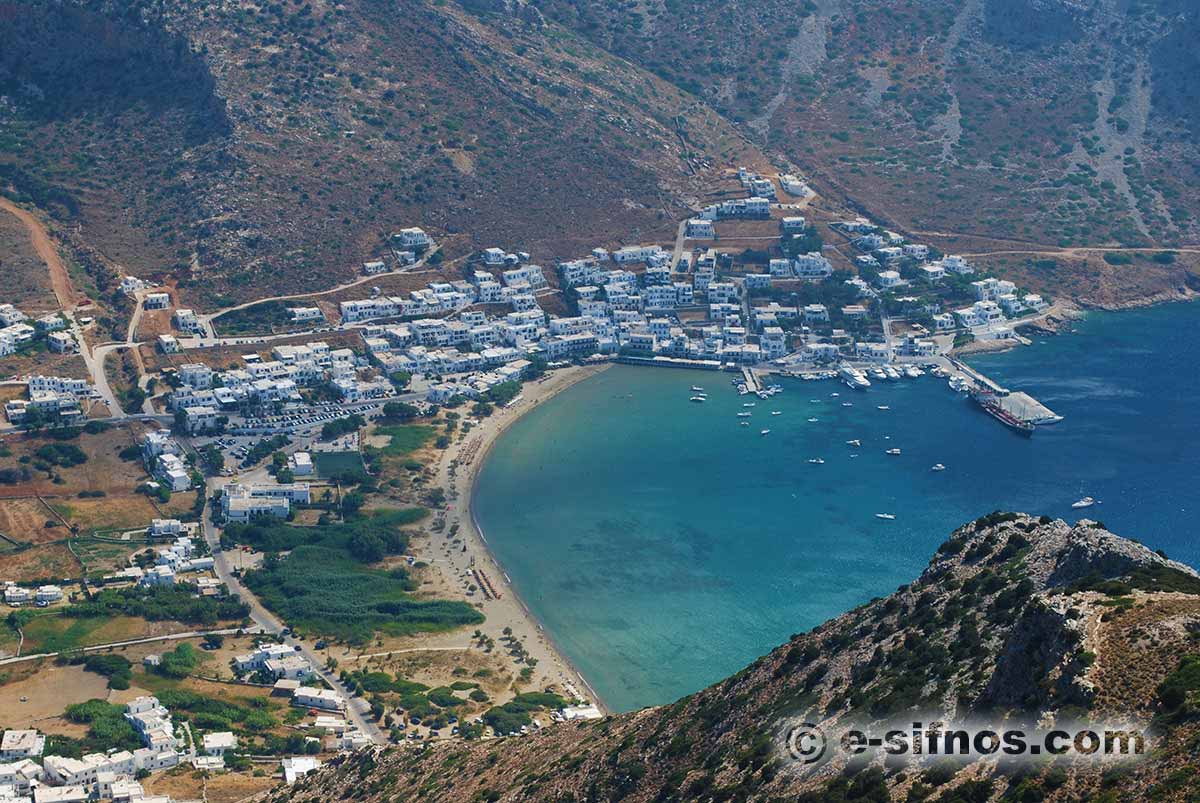History of Sifnos
Learn about the a.D. history of Sifnos
Flashback to the modern times history of Sifnos.
6th century a.D. - 1204 a.D.
In the 6th century a.D. Sifnos belonged to the 29th Province of the Islands the capital of which was Rhodes. At that time, ecclesiastically it belongs to the bishopric of Paros - Sifnos - Amorgos. From the excavations it hasn't been possible to find out when Christianism started spreading in Sifnos.
During the period of iconoclasms, Sifnos does not rest uninvolved. The occupation of Constantinople by the Franks in 1204 resulted in the redistribution of the of the empire's grounds. The islands were given to private individuals and thus, in 1207 the nephew of the Duke of Venice, Markos Sanoudos, occupies 17 islands - among which Sifnos - and establishes the Duchy of the Aegean.

1279 a.D. - Turkish rule
In 1279, Sifnos is conquered by the admiral of Byzantium Likarios and till 1307, when a new situation is formed, Sifnos is under the Byzantine dominion. During that year, Sifnos is occupied by Giannoulis Da Corogna, a Spaniard knight who belonged to the order of the knights of Agios Ioannis. Da Corogna declared his independence from the Duke of Naxos and named himself, free leader of the island after retiring from his order.
In 1464 after the death of the last Corogna, Sifnos is taken by Nikolaos B' Goranides. He married Marietta Da Corogna who was also the heiress of the island. This way they unite the houses Gozadini and Da Corogna and Kastro of Sifnos is the seat of this new miniature state. This period is the most difficult for the island. At that time, the Turks start the hostilities and we have a reduction of population.
During the Turkish domination the island gained privileges in the days of the Sultan Mourat the 3rd in 1580 and Imbrahem in 1646. Some of these privileges where that they had the right to restore their churches and that there weren't any mass kidnappings of children e.t.c.
16th - 17th century a.D.
The economic development of the islands begins in the middle of the 16th century and Sifnos is now an important commercial centre of Cyclades, from the early 12th century. At that time, a dynamic personality appears in Sifnos, Vassilis Logothetis, who affects and elevates the politic, religious and intellectual course of the island. He supports the economic progress of Sifnos and finances the building of the monastery Panagia Vrissiani.

Occupation of Sifnos
In 1646 the Archbisopric of Sifnos is established. During the period 1651 - 1664 a school of secondary education opened in Sifnos. In 1686 the church of Jerulalem allots the monastery dependency of the Holy Sepulchre to Sifnos, where today you shall find the churches of Agios Ioannis Prodromos and of Protomartiras Stefanos in Kastro. In 1797 the Archbishopric of Sifnos is united with the archbishopric of Milos, having as a seat the village Kastro in Sifnos.

Later, Sifnos is taken by the Russian brothers Orlot and by the Turks.
1821 - 1836 a.D.
Sifnos entered actively in the battle against the Turkish domination on the 15th of April in 1821. The offer of the residents of Sifnos in living material and in money for the fight, mainly from the monasteries was priceless. The list of the sworn friends included the following residents of Sifnos: Nikolaos Gryparis, Dimitrios Lagos and georgios Baos. In 1821, the tutor Nikolaos Chryssogelos (1780-1857) raised the flag of the Revolution in the school of Sifnos and being the leader of 150 Sifnean warriors he disembarked in Peloponnese, where he developed a multiform fighting action. He was also Minister of Education during the time of Kapodistrias, and founder of the Public Education.
During the regency of Othonas in 1833, Sifnos is divided in two municipalities, the municipality of Apollonia and of Artemonas - Kastro, and Kamares are the official port of the island.
In 1836 the two municipalities are fused into one and the capital is transferred from Kastro to Apollonia. At the same time, many inhabitants emigrate and the economy of the island goes through a difficult period. Many people emigrate and achieve many successes in various domains of science and arts and they never forget their island which they support financially.
Modern times
In 1914 the unified Municipality of Sifnos which has been established in 1836 has been divided in two Communities: Apollonia and Artemonas.

Sifnos people took part in the great war events of the 20th century. They served with loyalty their country with all of their power they participated in the fights of this county for its freedom.
In 1999, the two Communities have been united and they now form the unified Municipality of Sifnos.
